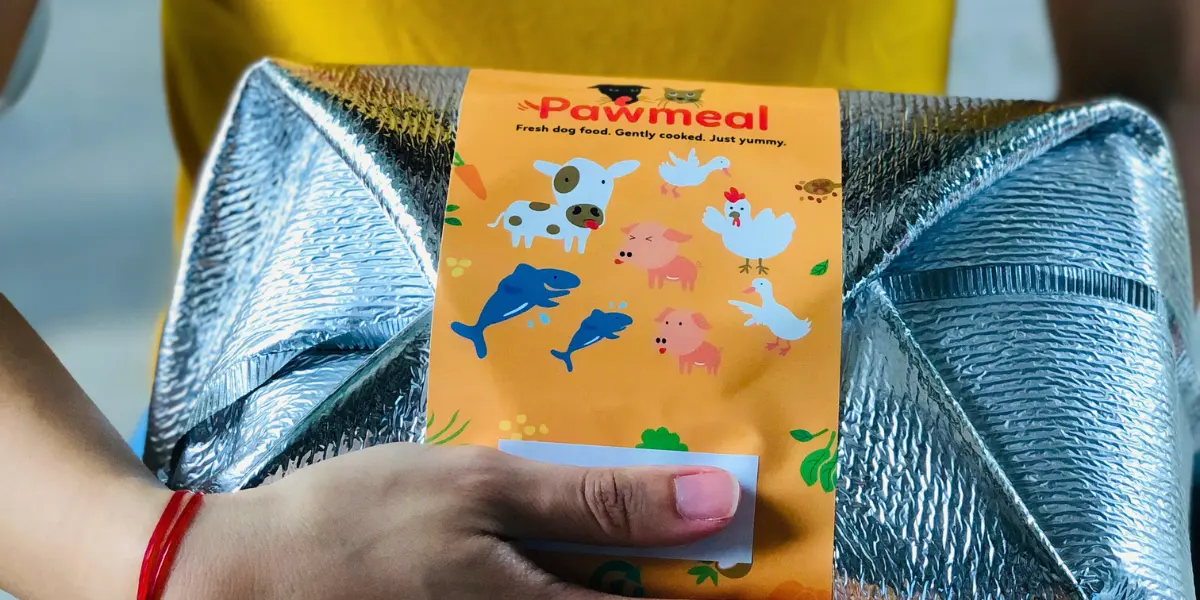
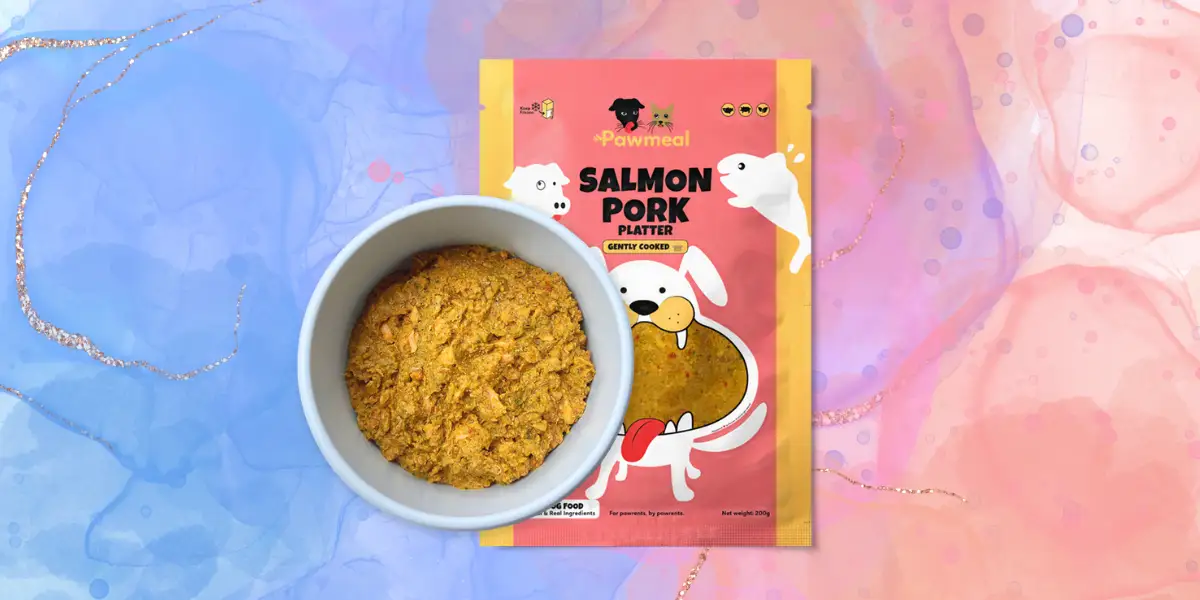
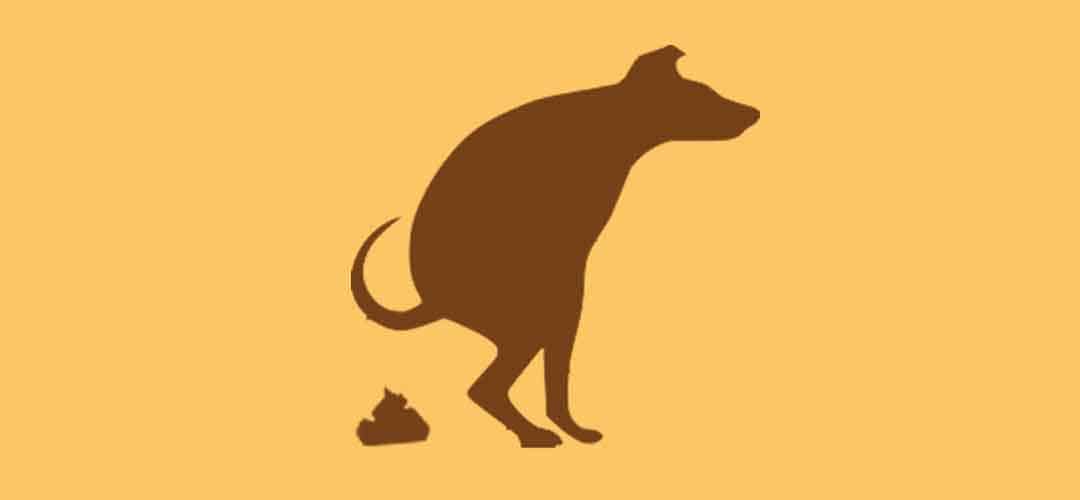
💩 Occasionally, pet owners and our customers ask us about the meaning of their dog’s poo. We all know that whatever comes out from our canine’s tummy most likely is due to what goes into it. (Note: Food usually is the reason for poop problems, but there are other non-food related factors too). We’ll look into 8 poop issues and share what they mean below. We’ll cover non-food related reasons too. 💩
Most pet owners will rather explore home remedies first to resolve minor problems with their pets. Our dog’s stools are one of the most significant and frequent indicators of its health. Even our Rara also poo at least twice a day. 😂 So our dog’s stools can help to update us about the state of its health.
If anything happens to our dog’s poop in the future, we are the first line of diagnosing. If you know the stool meaning, you will be able to better manage your dog’s pooping situation! 💪

Ok, let’s start with lao sai. (Some of you may not feel very pleasant as you are reading this 😅). One of the more common poop problems is when your dog’s poo becomes spurts of liquid. When you see that your dog lets out a puddle of poop, the potential cause can vary. Some of the more common causes can be:
Most of us will want to adopt a “wait and see” approach, hoping that the symptoms can become better. But the symptom can be minor, or it can be the start of something serious. We cannot regret it later when it is too late. So let’s try to strike a balance. Here’s our (and most vets’) advice: If the situation does not improve after 2-3 bowel movements, it is time to visit the vet.

If your dog suddenly has soft, loose poop, there are usually 2 questions to ask as a pet owner.
We also note that some pet owners are worried of soft poop and rather stick to only 1 type of food permanently. We also do not encourage that, because to have a comprehensive and balanced diet over time, dogs need to have more variety in their food intake. Eating with variety helps them develop a stronger, resilient body and reduces allergies risks. If you are worried about soft stools, start small by feeding bit by bit. See if there is any adverse reaction before gradually increasing feeding amounts.
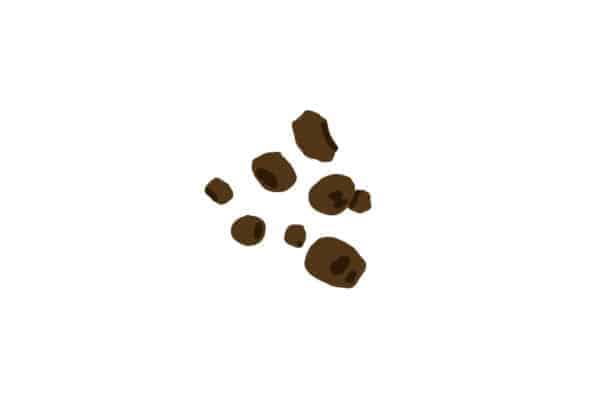
Very hard stools are not a good sight and not a positive sign for your dog either. However, fret not, as it is quite common for dogs to experience constipation.
One of the most common reasons for constipation is due to a predominantly dry kibble diet. There are usually too much dietary fibre present in kibbles and they do not contain any water. Some dry food manufacturing companies even use sawdust to bind kibbles.
Here are some of the typical causes for very hard stools:
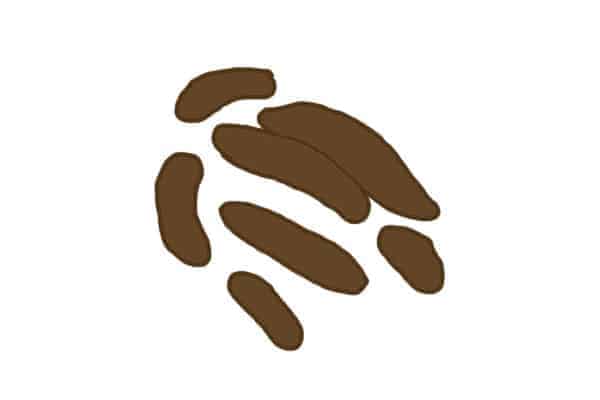
One of the main reason for large, voluminous amount of poops is due to processed kibbles. Sometimes, the amount of poop is comparable to ours’! 😂 Kibbles usually contain high amounts of carbohydrates and fibre, such as soybean, beet pulp, and rice hulls. Higher carbohydrates and fibre mean more poop. It’s like us eating more rice and bread, and in the end passing more motion.
Furthermore, both our dogs’ and our own bodies are unable to absorb the “not-so-useful” nutrients from the food we eat, such as carbohydrates. If the body does not absorb the food, they pass out as stool. So if your dog ejects lots of poop frequently, it may mean that it is not absorbing its food fully. In that case, you need to inspect and question the quality of the food.
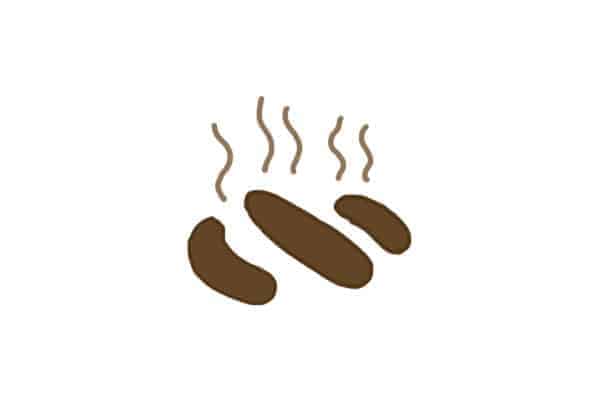
If you have been feeding kibbles all this while, try to switch to home cooked food for a few meals. Or you can try freeze-dried, raw or dehydrated options. And compare your dog’s poop smell.
Actually, dogs eating kibbles tend to produce stinkier poop because they are not used to absorbing bigger amounts of grains, starches and “grain-free” options containing peas and potatoes. When these food are not absorbed fully, your dog’s digestive system does not know what to do with the food, and they pass out eventually as poop.

If you see your dog’s stool that looks slimy with a coating of mucus-like substance around or in it – it may make you worried. Common issues may be due to an inflamed colon or mild inflammation in the gut. It may also be due to parvovirus or parasites. While it is advisable to be careful, there is usually a good chance that the mucus will clear up after a few rounds of bowel movement (a couple of days). If after a couple of days, your dog’s poop still contains mucus, you can then consider next course of action, ie. visit vet.
But before that, try to give your dog a 1-2 days to restore balance in its body on its own (Remember, if you want to “wait-and-see”, 2-3 bowel movements is the max!) If the poop is still the same, please visit your favourite vet.
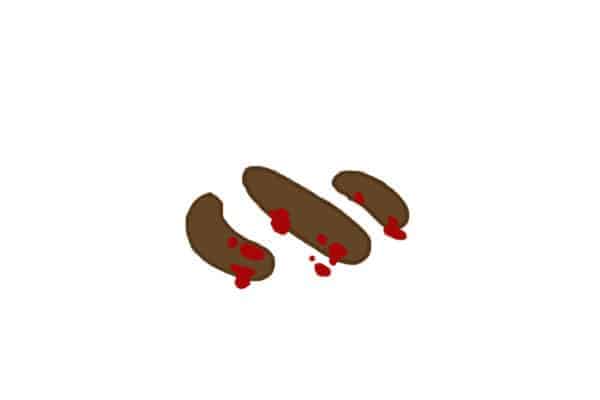
Stay calm if you see blood in your dog’s poop! The colour can be fresh red or very dark red. However, the causes can range from relatively minor to very serious.
A minor issue will be because the stools are too hard which causes abrasion when it is coming out.
A more serious case will be due to parasites or worms in your dog’s body which is causing wounds. Extreme issues will be due to the presence of possible ulcers or tumours.
Again, if after 2-3 bowel movements and blood still persists, it’s time to bring your dog to the clinic. Don’t wait any longer! Don’t let any potential health problems deteriorate. Bring a sample of the blood stained poop if possible too. (This will be helpful for further diagnosing!)
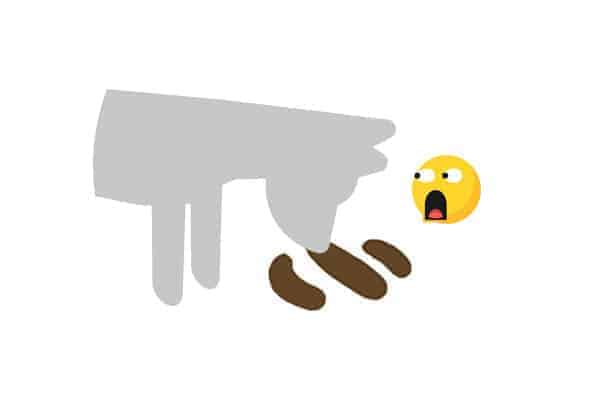
The medical name of dog eating own poop is called coprophagia. 🔍
This is more of a behavioural issue than issues with the poop itself. But if your dog is eating its own poo, it may be due to any of the following:
As Rara’s pawrents, we would like to share a few friendly tips to try to improve your dog’s poop. These are meant to be considered with caution, and only during the initial discovery of the poop problem. If the poop problem has persisted for more than 2 days, do consider seeking a veterinarian’s advice.
Feed some plain, steamed food that is gentle in your dog’s stomach. You can consider steaming food like broccoli and pumpkin, together with your dog’s preferred meat and mix together. During this period, giving slightly more vegetables or starches is alright, as the purpose is to help cleanse the body and solidify the stools.
Feeding bones is also another option. A couple of raw or dehydrated chicken or duck feet or wings (do not feed cooked – feed raw, dehydrated, or freeze-dried) may help.
You can also give some pre and probiotics to help with maldigestion, especially diarrhea issues.
Feed the current food (especially if it is new) less per meal. Continue for a few meals and monitor the condition of the poop for a couple of days. See if the loose stool improves.
You may want to consider adding a small quantity of mashed steam pumpkin to your dog’s current (new) food.
Give plenty of clean water during this period too.
Get your dog to drink more water! If your dog drinks by itself from the bowl, then it is great. If your dog refuses to drink, you can consider adding some water to his favourite food, or giving some steamed vegetable and meat broth.
Our Rara has this problem of not wanting to drink more water. As Rara is on homecooked food diet, we sometimes also add warm water to her food to make it taste like soup spoon. We also make her water bowl more ‘palatable’ by adding some meat-related stuff (gravy, juice, tiny meat bits) to water and she will slurp it all. 😅 These are our ways to let her drink more water. 😊
You can also add some dietary fibre like green leafy vegetables or mashed steamed pumpkin to your dog’s food.
If after more than 2 bowel movements or more than 2 days and the diarrhea or constipation still persists.
When the diarrhea or constipation occurs irregularly, especially when your dog recovers and then experiencing the same problem again (more than 2-3 times). This can potentially indicate a presence of worms.
When the diarrhea or constipation comes with blood, and lasts more than 2-3 bowel movements (or more than 2 days).
If your dog experiences vomiting, fever or behavioural change together with diarrhea or constipation – then you need to consult the vet immediately.
If you want to read more about understanding your dog’s poop, you can read this article.
Learn why fresh food can be a better food choice for your dog, and why not try our gently cooked food, if your dog has some poop issues. Or you can talk to us directly too! At hello@pawmeal.com 😊
Let’s learn more about our dog’s poop and their meanings, so that we can act swiftly when an issue arises! 💪
No account yet?
Create an Account
This is very helpful 🙂
Thx for the article
Great information, thank you!
Good morning ,
Luna has been on raw food now for three weeks , although she’s well and enjoying her food her poo has been small pebbles and changes colour often . Should maybe I add some veg ?
Hi Jools, you might want to try encouraging Luna to drink a bit more water and yes, some steamed pumpkin or sweet potatoes may be helpful for her stomach 😊
thank you for answering my questions and relieving my anxiety
Hi Cheryl, glad this helps to answer some of your questions! Please do let us know if you have more queries. We’re here to help! 😃
Hello. My dog has been having diarrhea since yesterday. She has been poopin out little spots. What can i do to help her?
Hi Lu, how does the “little spots” look like? Is it watery? You may want to try giving some steamed sweet potatoes or pumpkin to go with your dog’s regular food.
Hello i really need some help,my Chihuahua has been having diarrhea,her diarrhea is very lumpy and has and oil colored liquid around it,shes also been vomiting her dog food she ate an hour ago,shes resting now, btw this happened just this evening around 6or7 pm,what should i do??
Hi Ella! I hope your Chihuahua is doing better now. May I know how’s her diet like? You may wish to consider giving some fresh food that’s soothing to her tummy for the time being, to ease her digestion functions back to normal. Examples can include steamed minced chicken breast, sweet potato and pumpkins with broccoli. 😊
Let us know how it goes!
Hi love your post. It’s vet enlightening and touched all bases except the one I’m interested in. I have a 92 lb pit/lab. Super picky eater until I started cooking for him. I adopted him at age 10 he’s now 11. I stared cooking for him in July 2022. He has always had what I consider small poops for such a large dog. Do I need to be concerned?
Hello Star! Thanks for sharing about your pit/lab with us. It’s great to hear that you are cooking for your dog!
Small poops are usually a positive thing, as it indicates that the dog is absorbing the food’s nutrients well. Large amounts of poops (especially those that smells) usually means that the food were not absorbed as well (that’s why so much came out from the dog!)
We have pet owners commenting to us that their pets’ poop became less and more “odorless” when they switch to fresh food (be it cooked or raw), as compared to feeding kibbles.
I’d say, nothing much to worry, as long as your dog is eating well, and staying active and sprightly! 😊😘
Hi
my 13 year old cocker spaniel really struggles to poo but its soft and covered in a slimy mucus. He really stains to go and has started to go more even waking me in the night. He’s always struggled a bit but has always gone 1st thing in the morning and again on his walks. Today he had me up at 2 in the morning, evening having gone before bed, he went again this morning and on his walk and he has just gone again, every time it is soft and covered in mucus. He has just lost his brother, could this be causing him stress or should I be more worried?
Be grateful for your thoughts.
Hi! Thank you for sharing the details! It must not have been easy for you during this period! Have you brought your dog for medical checks? Has the soft poo and slimy mucus around it been ongoing for a period of time already? What is his current diet? I am so sorry to hear about the lost of his brother 🙁 The stress could be a potential reason too. But most importantly, you have to ascertain that it is not due to health conditions. If soft poo with mucus has been ongoing for a week or so, please do bring him to the vet for checks especially so due to his age.
My chihuahua is 5 she has always been “the pooper”. We’ve never been able to control her poop schedule because it’s so random. She will poop outside (a decent log) come back in and with 15mins. drop another similar size. We wonder where did that come from? She eats 2 times per day and we use than organic high quality can food. But again she has always been this way. She lives with two other chihuahuas and they are all 3 on the same walking and feeding schedule. The other 2 chi’s pooping is equivalent to their food intake, but this one randomly drops logs throughout the day. Also hers smells bad and if we don’t immediately clean it up she will sometimes eat it. She is otherwise a healthy chihuahua not overweight at all, about 3-4lbs. Do you think a probiotic might help?
Thank you
Hi Pamela, that’s a cute nickname for your chihuahua!
Every dog is different, and poop pattern can differ too (even though they are same breed and are ‘siblings’ staying together).
Generally, pooping a few times a day is probably not a big concern unless it is obvious that your dog is unable to control itself and the poop is not like a log.
If poop is a lot, it usually means that the body is not absorbing the nutrients of the food well enough. That’s why the bulk of the food intake passes out as poop. This may mean the canned food that you are feeding may not be received as well by your chi’s digestive system.
2 more signs that the food may not be a good fit: Smelly poop is a sign of lower nutrient absorption. And when a dog eats its own poop, it may also be due to a condition called coprophagia.
Hope these info may be useful for you!
8 year old Spayed English Bulldog typically weigh 38-40lbs. Took her the vet for weight loss and very loose stool.
Her blood work came back normal, SNAP cPL test came back normal. Fecal normal. Vet has me feeding her ID easy digestion along with Flagyl every 12 hrs. After medication, she still has runny poop. I don’t know what else to do, the VET suggested (after already paying $700 for the other tests) to do a diarrhea bacteria test.
Hi Dianna, when at home, try to give some steamed sweet potatoes or pumpkins (they are gently to the stomach and provides fiber) which can hopefully aid in digestion. I think likely have to go with your VET’s suggestion as well.. Hope your vet has managed to figure out the runny poop issue by now. Your dog will definitely get well soon. 🙂 Good luck!
Hey I have a 6 yr old mini long hair Chihuahua and she has always pretty much had really hard poo and struggles to get it out but I have always fed her the moist soft food loaf by Cesar so I’m not understanding the reason for her severe constipation. She don’t drink a lot of water though so the last couple days her movements have been dry and crumbly until today I found her with diarrhea around her butt and tail as well as being really weaker than usual.. please help me understand this issue!
Hello Mandy, it certainly looks like your Chihuahua is lacking in hydration which could possibly contribute to her constipation. As for Cesar’s moist soft food, even though it may be moist and contains liquid, the liquid may not be ideal to hydrate your dog. Possible reasons could be the liquid content already contains sauces or gravy which make up its viscous texture. These sauces or gravy may contain salt (which may further dehydrate your dog).
One way is to add some plain clean water to your dog’s current food. Making it more soupy can be a way to let your dog consume more water! 🙂 Add a little at a time, and see your dog’s reaction. Some dogs may just be turned off if there’s too much water mixed with food, so proceed with care!
Do give it a try, and let me know! 🙂
Sir mostly I have seen that the dogs poop convert into hairy mass after dry…what can be the possible reason
Hi, what do you mean by “hairy mass”? Do you mean the poop contains hair? or the dog’s poop itself kinda becomes strands after some time?
My 4 yr old Shih Tzu I make organic chicken with organic bone broth, carrots and peas and feed Atlantic salmon a couple times a week. I also put pet moringa every day at least a half a scoop and mix in his food. I noticed his stores, same darken hard and he doesn’t drink his water as much as he should. I tried giving him pumpkin purée organic but he doesn’t seem to want that either. Any suggestions?
Hi Jo! Bone broth and puree are excellent choices as these are foods that contain high water content. So if your Shih Tzu is not keen on plain water, licking on broth and puree can be somewhat of a ‘make-do’ solution to ensure there’s at least liquid intake on a daily basis.
To encourage your dog to drink more water, maybe you can try adding some water to his other food. So instead of usual cooked food, think of it as turning it into a ‘soup’ by adding water moderately. Some dogs may just like the meaty taste of soup and lick it all clean! Try to add a few teaspoons at a time, and gauge his response. 🙂
Hope this helps!
Very helpful and full of Information. Enjoy reading till the very last end. Thank you very much author